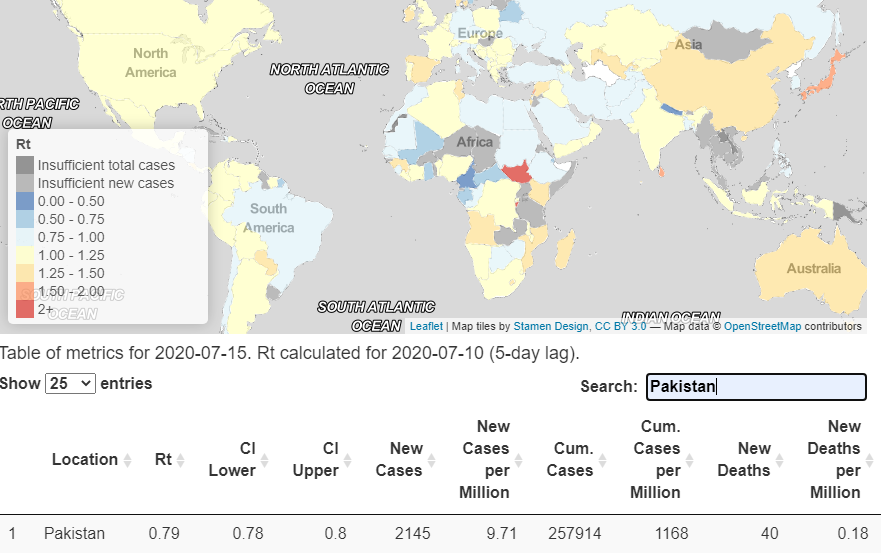Have been going through the available covid-19 data from Pakistan & talking to people in MoH/WHO. It does appear that there are now substantive reasons to believe that the drop in cases isn't just about reduced testing and there's some basis for cautious optimism.
First, on the testing itself: the initial drop in cases after mid-June was mirrored by the reduction in tests. However, after June 29th, testing levels plateaued at around 22,500/day while new cases continued to fall.
Secondly, the positivity rate (the proportion of covid-19 tests that are positive) has almost halved in a month, from averaging 22% in the first half of June to about 11-12% on average now. If tests were reducing amid a worsening pandemic, the positivity rate would be going up.
Thirdly, Pakistan's effective Reproduction number - atleast independent calculations of it, since the govt hasn't released its own estimates - has also been consistently <1 in recent weeks. This estimate is from Harvard School of Public Health in Boston: http://metrics.covid19-analysis.org
Fourth: as per NEOC data, hospitalization from covid-19 has more than halved over the past month, from about 7,500 patients admitted on June 18 to less than 3000 by yesterday. This is true across provinces but most drastic reduction is in Punjab (4356 to 1200).
Fifth, ventilator occupancy numbers and rates have also gone down, suggesting a reduction in numbers of those with severe infections (though this also reflects changes in clinical practices & new treatments resulting in less ventilator use).
Caveats apply of course. These trends are based on govt data & there are lots of irregularities there, as identified in this detailed BBC report by @abidhussayn: https://www.bbc.com/urdu/pakistan-53347492 However, beyond a *very* elaborate conspiracy, I don't think this data is manufactured.
So what explains this fall? Don't have definitive answers, but sense it has to do with a combination of a) mass behavioral change after Eid catastrophe; b) lockdowns in 400+ hotspots in June; c) increased mask use; & d) immunological variables we still know very little about.
The most compelling counter-explanations are in this thread, i.e., that people are avoiding testing & hospitals altogether out of fear & stigma. I think that's definitely partly at play, but don't think that explains all of it (like falling positivity) https://twitter.com/SiR_GaMeZaLoT/status/1283867414808207360
To know for sure whether official cases+deaths are down just b/c people are avoiding testing+treatment, we'll need data on excess deaths, like this excellent research by @SecKermani in June. If this trend stays true for July, more reason to question data. https://twitter.com/SecKermani/status/1279642115467812864
All in all, while there's reason for hope, don't think there's reason to declare victory yet. Covid-19 relies heavily on super-spreader events (as we saw on Eid) & 80% of its transmission comes from <20% of its cases. Eid-ul-Azha & Muharram could yet unravel much of this progress
New data gathered by @SecKermani for BBC on excess burials in Lahore & Khi for July seems to confirm that excess mortality is less pronounced in July than in June. Covid-19 mortality is definitely greater than in official stats but seems to be reducing. https://twitter.com/SecKermani/status/1284100099854008321

 Read on Twitter
Read on Twitter













